Refinancing your home can be a strategic move to potentially save money, adjust your loan terms, or tap into your home equity. However, the costs associated with refinancing, known as closing costs, can sometimes deter homeowners. A no-closing-cost refinance emerges as an appealing option, promising a refinance without the upfront expenses. This article will navigate the intricacies of a no-closing-cost refinance, weighing the pros and cons to help you determine if this option is suitable for your financial circumstances. It's essential to understand the nuances before making a decision that could impact your long-term financial well-being.
Understanding Refinance Options
When exploring ways to potentially save money on your home loan, understanding your refinance options is crucial. A refinance involves taking out a new mortgage loan to replace your existing one, and the reasons for doing so can vary widely. You might want to refinance your mortgage to secure a lower interest rate, shorten the loan term, consolidate debt, or even access your home equity for renovations or other significant expenses. Each of these goals aligns with different refinance strategies, and it's important to assess your individual financial situation to determine the best approach to refinancing. Consider all aspects of your current mortgage and future goals when choosing the best path.
What is a Refinance?
At its core, a refinance is the process of replacing your current mortgage with a new loan. This new loan is used to pay off your existing mortgage, essentially starting fresh with new terms. Homeowners often refinance to secure a lower interest rate, which can translate to significant savings over the life of the loan through a lower monthly payment. However, a refinance can also be used to change the loan term, perhaps shortening it to build equity faster or extending it to reduce the monthly payment. A refinance loan can also be an option for converting an adjustable-rate mortgage to a fixed-rate mortgage for more predictability, or even to consolidate other debts into your mortgage.
Types of Refinancing
Several types of refinancing options exist, each catering to different needs and financial goals. These options include:
A rate and term refinance, which focuses on securing a lower interest rate or adjusting the loan term.
A cash-out refinance, allowing you to borrow more than what you owe on your current mortgage, receiving the difference in cash, which can be used for various purposes but also increases the loan amount.
A cash-in refinance involves paying down your mortgage balance at the time of refinance, potentially helping you get a better interest rate or eliminate mortgage insurance. Lastly, there's the VA interest rate reduction refinance loan, specifically designed for veterans to lower their interest rate and reduce their monthly mortgage payment.
What is a No-Closing-Cost Refinance?
A no-closing-cost refinance is a type of mortgage refinance where the borrower does not pay closing costs upfront. Instead, the lender covers these costs, which typically include appraisal fees, title insurance, and origination fees. While it sounds like a completely free refinance, offering a no-closing-cost refinance usually means the lender recoups these expenses by charging a slightly higher interest rate on the refinance loan or by rolling the closing costs into the new loan's principal balance. Therefore, while you avoid paying closing costs upfront, you'll still pay for them over the life of the loan, either through a higher monthly payment or increased principal. It's crucial to evaluate whether choosing a no-closing-cost refinance will save you money in the long run.
Pros and Cons of Refinancing
Pros of a No-Closing-Cost Refinance
One of the most appealing advantages of a no-closing-cost refinance is the elimination of upfront expenses. When you refinance your mortgage, closing costs can quickly add up, potentially deterring homeowners from pursuing a refinance. With a no-closing-cost refinance, you avoid paying these fees upfront, making the refinance more accessible. This can be particularly beneficial if you're short on cash or prefer not to deplete your savings. By eliminating the need to pay closing costs upfront, a no-closing-cost refinance may make sense if you are looking to refinance your mortgage quickly without an initial financial burden. The lower initial costs of refinancing without closing costs can also offer a quick influx of capital by freeing up your funds for other investments.
Cons of a No-Closing-Cost Refinance
While a no-closing-cost refinance offers the advantage of avoiding upfront expenses, it's crucial to understand the trade-offs involved. The lender doesn't simply absorb the closing costs; they recover them in other ways, such as charging a higher interest rate on your new loan. This higher rate means you'll pay more interest over the life of the loan, potentially negating any initial savings. Additionally, some lenders might recoup these expenses by rolling the closing costs into the new loan's principal balance, increasing your overall debt. The cons of a no-closing-cost refinance include the possibility of a higher rate, which means that the total amount paid over the lifespan of the mortgage loan may increase, resulting in a larger mortgage payment. This higher mortgage payment means that you may end up paying more for your refinance in the long run.
Comparing Costs and Benefits
When deciding whether a no-closing-cost refinance is right for you, it's essential to carefully compare the costs and benefits. Start by calculating the total closing costs you'd pay upfront with a traditional refinance. Then, determine the higher interest rate you'd incur with a no-closing-cost refinance. Calculate how much extra you'd pay in interest over the life of the new loan due to the higher rate. If the additional interest paid exceeds the upfront closing costs, a no-closing-cost refinance may not save you money. Also, consider how long you plan to stay in your home. If you plan to move soon, the higher rate might not be a significant drawback. However, if you plan to stay for many years, the accumulated interest could make a traditional refinance a more cost-effective option. It's also crucial to check if you are eligible for any VA interest rate reduction refinance options.
How No-Closing-Cost Refinances Work
Mechanics of a No-Closing-Cost Refinance
A no-closing-cost refinance operates on the principle of shifting the financial burden of closing costs. Instead of the borrower paying these expenses upfront, the lender covers them. This does not mean that these costs disappear, but that the lender recovers them through alternative means. Typically, this involves charging a higher interest rate on the new loan or incorporating the closing costs into the new loan's principal balance. The lender profits off of the higher interest rate or adding closing costs to your principal.
It's crucial to understand this mechanism when evaluating whether a no-closing-cost refinance is the right option. When lenders are offering a no-closing-cost refinance, they are not simply waiving the fees associated with the mortgage refinance, but rather structuring the refinance loan so that they are compensated over time. This means that you, as the borrower, ultimately pay for the closing costs, albeit in a less direct manner, usually through a higher mortgage payment.
Impact on Your Loan Terms
The primary impact of a no-closing-cost refinance on your loan terms is the potential for a higher interest rate. Lenders use this to offset the upfront payment they incur by covering closing costs. While the difference in interest rate might seem minimal, even a slightly higher rate can significantly increase the total amount you pay over the life of the loan. This is one of the cons of a no-closing-cost refinance that must be carefully considered. Additionally, if the lender chooses to roll the closing costs into the new loan's principal, your loan amount will be higher, leading to larger monthly payments and more overall interest paid. Also, keep an eye out for options for a VA interest rate reduction refinance.
Effect on Monthly Mortgage Payment
The effect on your monthly mortgage payment with a no-closing-cost refinance depends on how the lender chooses to recoup the upfront closing costs. If the lender charges a higher interest rate, your monthly payment will increase proportionally. This is because more of your payment will go toward interest, and less toward the principal balance. Alternatively, if the lender adds the closing costs to your principal, your monthly payment will also increase, as you're now paying interest on a larger loan amount. While the initial appeal of a no-closing-cost refinance is to avoid paying closing costs upfront, it's important to recognize that your mortgage payment may still be higher than your previous mortgage payment, diminishing the long-term benefits of refinancing.
Deciding If It's Right for You
Assessing Your Financial Situation
Before diving into a no-closing-cost refinance, it's crucial to assess your current financial situation and future financial goals. Consider your income, debts, and credit score, as these factors will influence the lender's willingness to offer you a no-closing-cost option. Review your current mortgage terms, including the interest rate and remaining balance. Determine if a refinance aligns with your long-term financial objectives, such as lowering your monthly payment, shortening your loan term, or tapping into home equity. Understanding your financial standing will help you evaluate whether choosing a no-closing-cost refinance will save you money in the long run. Take time to analyze your finances, looking for any opportunity to refinance your mortgage without extra fees.
When to Refinance a Mortgage
Knowing when to refinance a mortgage involves considering several factors. If interest rates have dropped significantly since you obtained your current mortgage, you may want to refinance to secure a lower interest rate. If your credit score has improved, you might qualify for a better interest rate. Also, consider refinancing if you want to switch from an adjustable-rate mortgage to a fixed-rate mortgage for more predictability. If you have significant debt, a cash-out refinance could consolidate those debts into your mortgage, but be cautious about adding more debt to your home loan. Before deciding, weigh the pros and cons of refinancing, factoring in the refinance fees, how long you plan to stay in your home, and potential long-term savings.
Final Thoughts on No-Closing-Cost Refinances
In conclusion, a no-closing-cost refinance can be a viable option if you don't want to pay closing costs upfront. However, it's crucial to understand that offering a no-closing-cost refinance does not mean a free refinance. Lenders recoup refinance closing costs through a higher interest rate or by rolling the closing costs into the new loan's principal balance. Carefully weigh the pros and cons of no-closing-cost options, comparing the interest rate and loan terms with those of a traditional refinance. Be aware that a VA interest rate reduction refinance loan or other specialized programs may offer better terms. Ultimately, whether a no-closing-cost refinance may make sense depends on your individual financial situation and long-term goals. Evaluate all options and choose the mortgage product that best suits your needs.
AUTHOR BIO
Will Foster | First State Bank Mortgage Senior Loan Officer
I became a mortgage lender in 2010, right after the "bubble" popped, and the mortgage industry underwent an incredible transformation. This has given me a unique advantage in the fact that I have never known anything other than the highly-regulated world we now live in.
Throughout my years of experience, my primary goal has been to keep up with the constant changes in the industry so I can help my clients investigate all of their options and maximize savings. In addition, because I specialize in Conventional, FHA, USDA, Jumbo, portfolio, and VA refinances and purchases, I can help a wider variety of individuals, families, and investors identify and secure the right loan to best suit their future interests.
The mortgage process can be a little confusing and even overwhelming these days with all of the regulations. I guide my clients through the process from start to finish, and I try and make it as painless and hassle-free as possible.


